Step voltage and potential equalization
 Many of us from childhood remember that a bare tattered wire that fell to the ground is very dangerous. I remember various passions-muzzles about wet weather and about unfortunate victims who did not even have “happiness” to touch the metal, which was energized and caused their injury. All in all, they managed to pass in dangerously close to the damaged line - and this was more than enough.
Many of us from childhood remember that a bare tattered wire that fell to the ground is very dangerous. I remember various passions-muzzles about wet weather and about unfortunate victims who did not even have “happiness” to touch the metal, which was energized and caused their injury. All in all, they managed to pass in dangerously close to the damaged line - and this was more than enough.
But what kind of phenomenon is this, thanks to which a wire that lies “innocently” lying to one side becomes a deadly threat? Everyone knows that an electric shock to a person can only be caused by an electric current passing through his body. And electric current needs a clear path. At least two points of application on the body of the unlucky one are necessary: one of them is the phase from where the current can come, and the second is zero, where it can freely go ...
Plastic ducts (cable channels), how to fix the cable channel
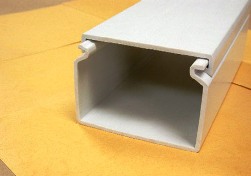 When it becomes necessary to install and install external wiring, preference is most often given to the cable channel. It is understandable: the cable channel complies with fire and electrical safety standards, and in addition, it just looks more advantageous in comparison with, for example, wiring in a corrugated pipe or, especially, open wiring.
When it becomes necessary to install and install external wiring, preference is most often given to the cable channel. It is understandable: the cable channel complies with fire and electrical safety standards, and in addition, it just looks more advantageous in comparison with, for example, wiring in a corrugated pipe or, especially, open wiring.
However, the installation and closure of cable channels (ducts) is indeed the highest aerobatics of installing office and home electrical wiring. The variety of sizes, designs and properties of cable channels is so wide that there is simply no question of any uniform rules that uniquely establish the technology for installing plastic boxes. Therefore, those who are going to deal with the cable channel for the first time can be given only some tips that are purely recommendatory in nature ...
Strain gages in automation systems
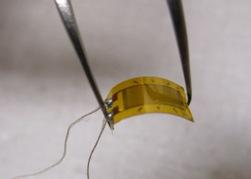 No closed automatic control system is conceivable without sensors, on the testimony of which feedback is formed.
No closed automatic control system is conceivable without sensors, on the testimony of which feedback is formed.
Sensors ... So different in design and principle of action. Sensors of pressure, temperature, speed, effort, current sensors, voltage, displacement ...
But the sensor is just a device that changes its signal in proportion to the measured parameter. And since the most convenient signal for transmission and conversion is electric current, the principle of operation of most sensors is based on a change in their own electrical resistance under the influence of an external factor. Therefore, sensors with built-in tensometric elements have become widespread ...
What is transition contact resistance and how to deal with it
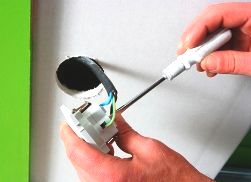 From earlier articles posted on bgv.electricianexp.com, you can see that as soon as the question relates to the methods of connecting the wires, disputes immediately arise over which of the connection options is better and more reliable. The highest quality contact connection will always be one that provides the lowest transition contact resistance for as long as possible.
From earlier articles posted on bgv.electricianexp.com, you can see that as soon as the question relates to the methods of connecting the wires, disputes immediately arise over which of the connection options is better and more reliable. The highest quality contact connection will always be one that provides the lowest transition contact resistance for as long as possible.
Contact connections in large numbers are included in all electrical circuits and devices and are their very important elements. Since the trouble-free operation of electrical equipment and wiring depends to a large extent on the state of electrical contacts, in this article, let’s take a look at what “transition contact resistance” is and what factors depend on it. Lean wherein will be on theory of electrical apparatus ...
 Very often, electricians have to connect the electrical installation to an existing line, passing by in relative proximity.In other words, it is necessary to create a branch of the wires.
Very often, electricians have to connect the electrical installation to an existing line, passing by in relative proximity.In other words, it is necessary to create a branch of the wires.
An example is the connection of a private house to a 0.4 kV overhead line or the connection of an apartment electrical switchboard to access electric risers. In both of these cases, the line passes, possibly very close by - here they are, the coveted 220 or 380 volts with the necessary reserve for power, at hand. But how to connect to them?
Since this problem is widespread and long-known, there are already quite a lot of options for solving it, and in this article we will try to consider them in detail. The very first way to create a branch that comes to mind ...
How to repair a New Year's garland
 New Years is soon! Christmas trees, toys, all kinds of lights ... cheer up. But how “happy” the situation is when we take the ingenious invention of mankind - the Christmas tree electric garland, plug it into the network, and it does not fully or partially work. What to do?
New Years is soon! Christmas trees, toys, all kinds of lights ... cheer up. But how “happy” the situation is when we take the ingenious invention of mankind - the Christmas tree electric garland, plug it into the network, and it does not fully or partially work. What to do?
The easiest way to solve the problem is to go buy a new garland! But if you don’t want to spend money, believe in your strength and patience, then you can try to become a “resuscitator” of the New Year’s beauty.
Let's start with the fact that we recall: the simplest garland consists of a certain number of bulbs connected in series. With this connection, the operating voltage of the consumers is summed. And we can, for example, turn on 55 light bulbs rated for 6 V each, into a network with a voltage of 220 V ...
Superconductivity in the electric power industry. Part 2. The future of superconductors
 At first glance, new materials, superconductors, seem to be advantageous to use almost everywhere where magnetic fields and electric currents are used. But is it?
At first glance, new materials, superconductors, seem to be advantageous to use almost everywhere where magnetic fields and electric currents are used. But is it?
In order to navigate many technical works with superconductors, it should be borne in mind that there are no superconductors, as such, at all. These are the usual metals known to all, under special conditions exhibiting unusual properties.
Aluminum, for example, conducts electric current well at room temperature, therefore it is considered one of the best conductors. The magnetic field in it is slightly enhanced: such materials are called paramagnets. Aluminum perfectly transmits heat, which means that it can be considered a heat conductor. When cooled to extremely low temperatures, the properties of some metals change significantly ...
Superconductivity in the electric power industry: present and future
 The general pattern of our time is the narrowing of the gap between a particular discovery and its implementation. Once this interval reached hundreds of years, now it has decreased to a minimum. For example, the introduction of photography is 112 years behind its opening. Mineral fertilizers began to be used 70 years after their creation, telephone communications - after 50 years, radio broadcasting - after 35, radar - after 15, television - after 12, an atomic bomb - after 6 years, a transistor - after 3, and a laser - after only 2 of the year.
The general pattern of our time is the narrowing of the gap between a particular discovery and its implementation. Once this interval reached hundreds of years, now it has decreased to a minimum. For example, the introduction of photography is 112 years behind its opening. Mineral fertilizers began to be used 70 years after their creation, telephone communications - after 50 years, radio broadcasting - after 35, radar - after 15, television - after 12, an atomic bomb - after 6 years, a transistor - after 3, and a laser - after only 2 of the year.
The beginning of the technical use of superconductors dates back to 1955, when the first electromagnet was created with their help. 56 years have passed since the discovery of superconductivity to its introduction. What is the matter? According to some British physicists, this delay is due to two reasons: the insufficient development of cryogenic technology and the discovery of only soft, pure superconductors ...
Temperature sensors. Part Four A few more types of temperature sensors
 In the previous parts of the article, thermistors and thermocouples were described. This article will talk about other types of temperature sensors.
In the previous parts of the article, thermistors and thermocouples were described. This article will talk about other types of temperature sensors.
In the same temperature ranges as for semiconductor thermal resistances, ordinary diodes or pn junctions of transistors are often used to measure and control temperature.
The use of these devices is explained by the fact that they have a temperature coefficient of voltage TKN. For all semiconductors, it is negative and approximately the same: -2mV / ° C. To verify this, it is enough to do the simplest experiment described below. If a Chinese-made digital multimeter at room temperature “rings” silicon diodes or transistor junctions, then the numbers about 690 - 700 are displayed on the indicator ...
Temperature sensors. Part three. Thermocouples. Seebeck effect
 Externally, the thermocouple is arranged very simply: two thin wires are simply welded together in the form of a neat little ball. Some modern Chinese-made digital multimeters are equipped with a thermocouple, which allows you to measure the temperature not less than 1000 ° C, which makes it possible to check the heating temperature of the soldering iron or iron, which they are going to smooth the laser print to fiberglass, as well as in many other cases.
Externally, the thermocouple is arranged very simply: two thin wires are simply welded together in the form of a neat little ball. Some modern Chinese-made digital multimeters are equipped with a thermocouple, which allows you to measure the temperature not less than 1000 ° C, which makes it possible to check the heating temperature of the soldering iron or iron, which they are going to smooth the laser print to fiberglass, as well as in many other cases.
The design of such a thermocouple is very simple: both wiring are hidden in a fiberglass tube, and even do not have insulation noticeable to the eye. On the one hand, the wires are neatly welded, and on the other they have a plug for connecting to the device. Even with such a primitive design, the results of temperature measurement are not in doubt, unless, of course, the measurement accuracy is required ...
Multitariff electric meter. When will the costs pay off?
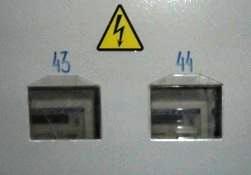 Multi-tariff meters are becoming more common when accounting consumption electricity. How quickly will the costs of its acquisition and installation pay off?
Multi-tariff meters are becoming more common when accounting consumption electricity. How quickly will the costs of its acquisition and installation pay off?
It seems obvious the economic effect of the use of multi-tariff metering devices for electric energy. The essence of the work of this electric meter is that, depending on the program laid down in it, it takes into account the energy consumption not by one digit, but by several. The entire amount of electrical energy consumed by the consumer is divided into two time periods: day and night.
The tariff for electricity consumed during the daytime is normal, set by the regional energy commissions. But the electricity “burned” at night costs exactly half the price ...
Touch voltage in electrical safety case study
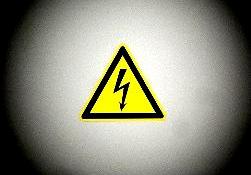 How badly will a person be injured by electric shock when they come under voltage? It depends on many factors, such as the type of current in the network, the path of the current passing through the victim’s body, the electrical resistance of the body, and, of course, the touch voltage.
How badly will a person be injured by electric shock when they come under voltage? It depends on many factors, such as the type of current in the network, the path of the current passing through the victim’s body, the electrical resistance of the body, and, of course, the touch voltage.
Here about the last factor and I would like to talk in more detail. At one time I had to listen to lectures on electrical safety from a professor at a local university. From year to year I had to see how the professor performs the same trick in front of an audience.
The trick was this: the professor, a respected man of advanced years, openly hooligans, bending a metal paper clip and shoving it with his bare hands alternately in both sockets of a 220-volt electrical outlet. There were no health consequences for the professor ...
